In this one, we’ll be talking about sustainable wardrobe basics.
And considering the nature of these 2 staple materials, it is borderline impossible to find brands who produce them responsibly.
Faux leather and cashmere are probably the only 2 fabrics I would consider versatile enough to fit any style, whether minimalistic or hyper-trendy and fashion week after fashion week, we see them on the FW runways. The real challenge for me was to find retailers and labels who actually provide quality products that were produced with the people, animals and the environment in mind.
I found 2 luxury brands, so I want to talk about eco-friendly high-end labels here as well. Here we go.
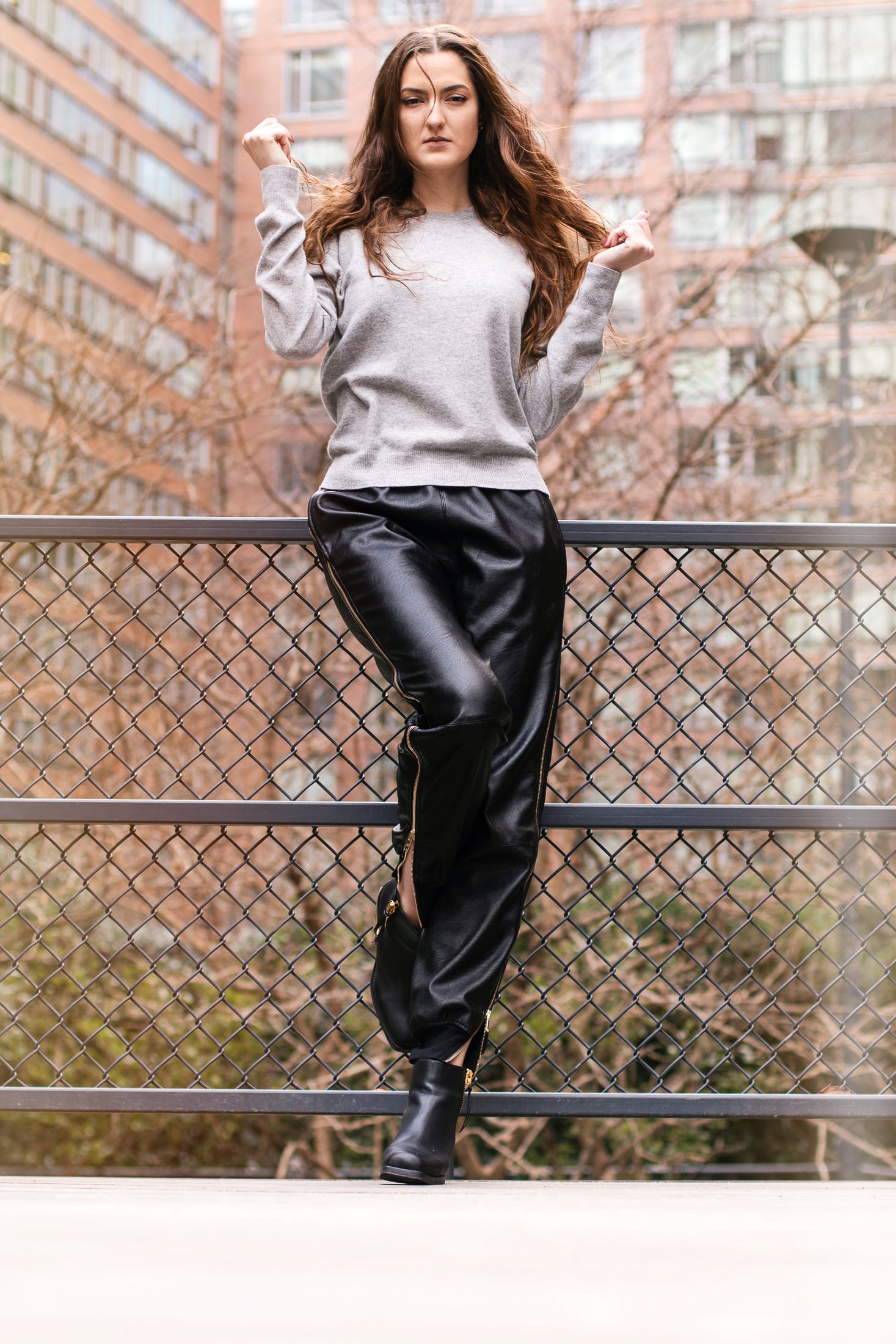

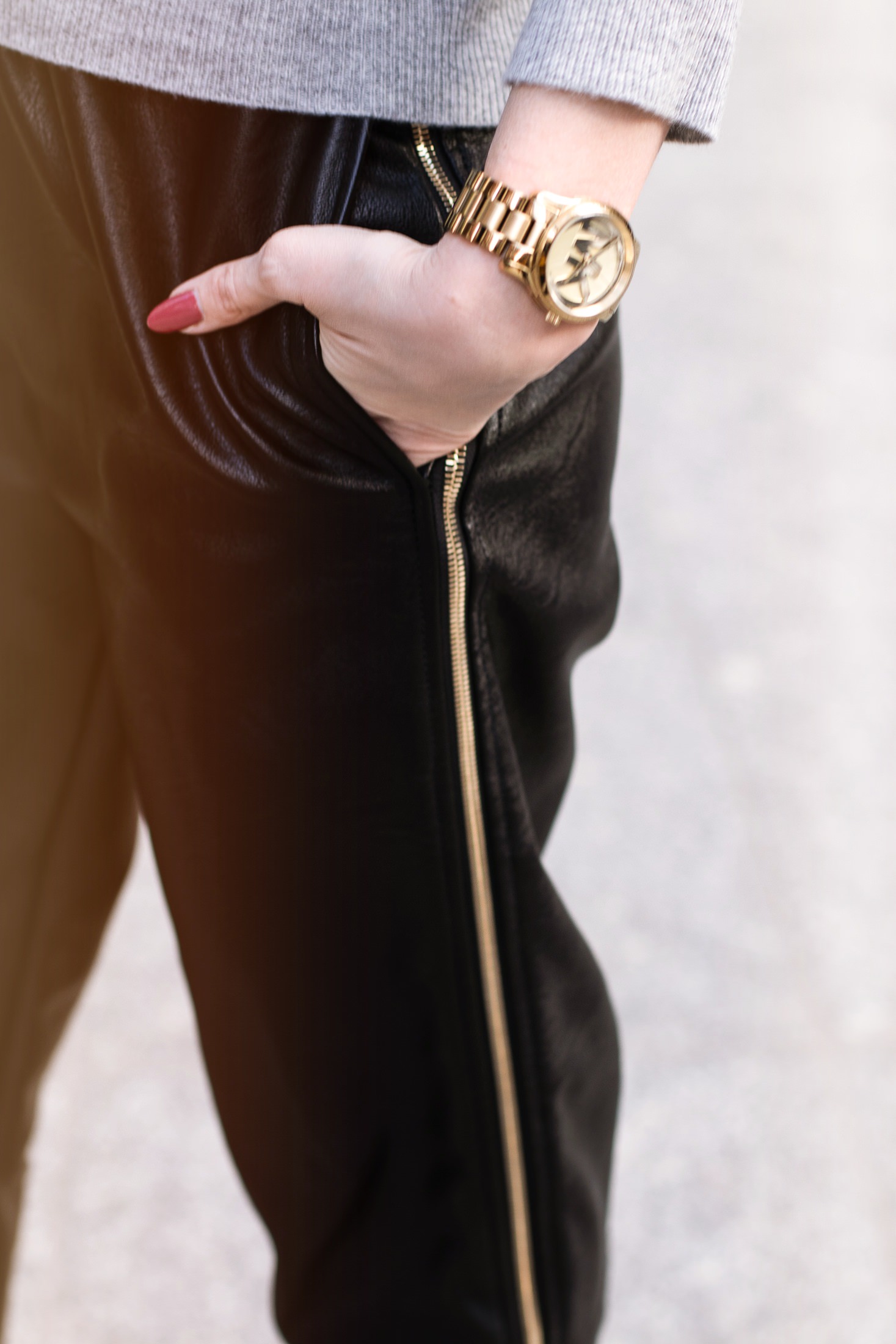
In this look, I’m wearing faux leather pants by Stella McCartney, which is by no means an affordable everyday brand. I got them for $600 ON SALE and now they’re hanging in my closet covered in 3 bags and no-one is allowed to touch them or breathe near them, including my baby cat who’s going through a wild phase and developed extra interest for the expensive things in my closet… Anyway, I think it’s important to mention that Stella McCartney is one of the few luxury brands actually maintaining an eco-friendly policy. There is a 13-page document on stellamccartney.com sharing the locations of all material suppliers, material details, actions taken this past year to monitor and audit production sites, actions taken to prevent modern slavery and more useful info on the brand’s sustainable initiatives. There are some areas the brand is still “in progress” on, like using 100% eco-friendly recyclable materials and auditing 100% of the supply chain, but otherwise Stella McCartney is definitely the leader in sustainable luxury fashion providing clear transparent information and publicly sharing plans of improvement, including “setting a deadline for the elimination of hazardous chemicals” and committing to “reduce waste across its entire supply chain”.
**Information on the brand partially pulled from the brand website, partially from Good On You app.
These pants feel amazing, the fit is very relaxed, athletic and versatile. Athleisure is still a thing, which doesn’t surprise me, and these pants perfectly fit the style or actually one that is a lot less relaxed. I would never associate the texture with anything cheap (which faux leather is often considered to be).



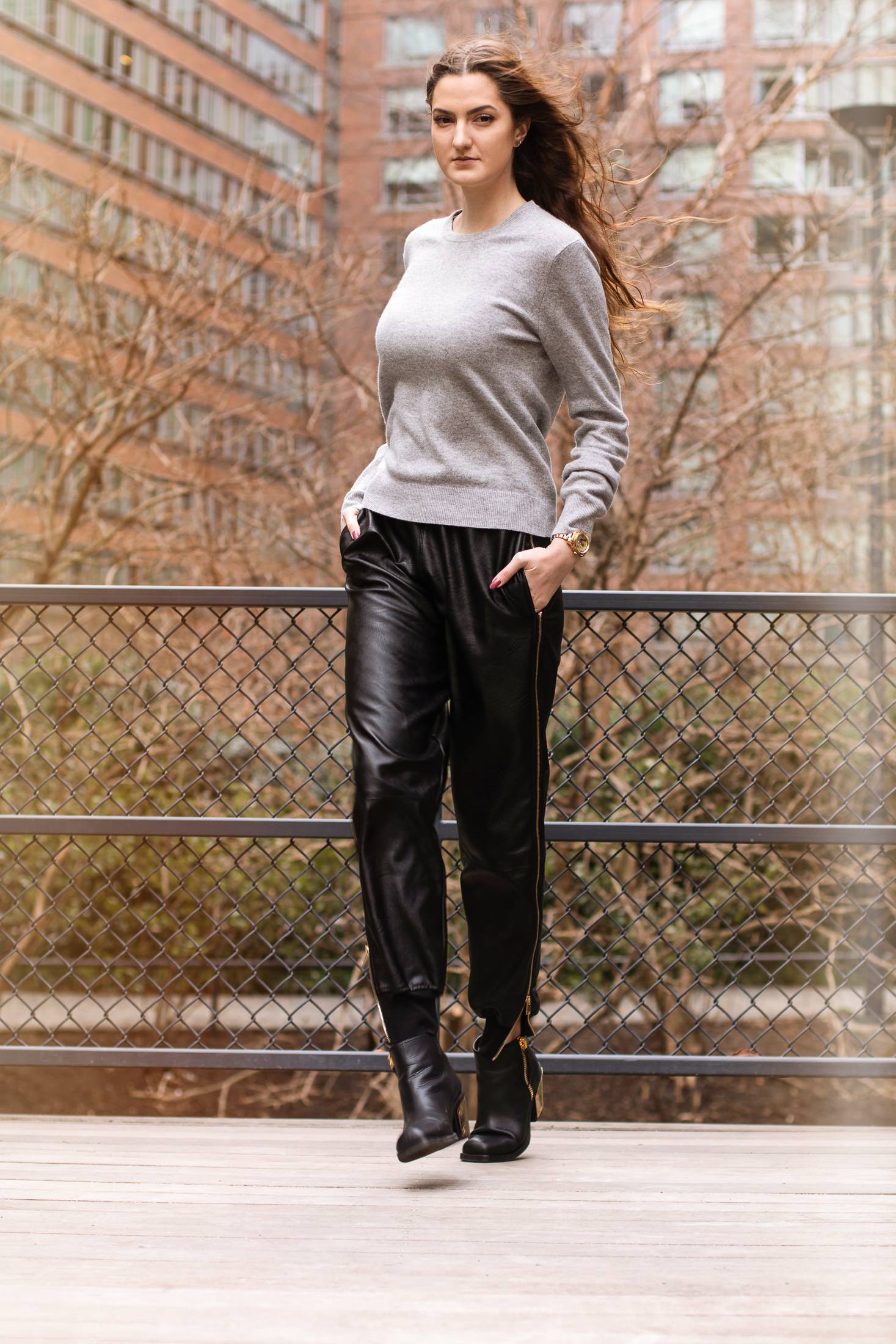

As I mentioned before, it’s not lost on me that this is a super expensive item. We’re talking about splurging here. But I also know a lot of shoppers out there save up to buy that one (or two, or five) pieces that’ll be treasured designer items and I want to give you options of where you might want to invest your money instead of, I don’t know… Dolce & Gabbana. Please don’t invest in Dolce & Gabbana. Just don’t do it. Fold your dollar bills into paper planes, throw them out the window and that’s probably a better investment 
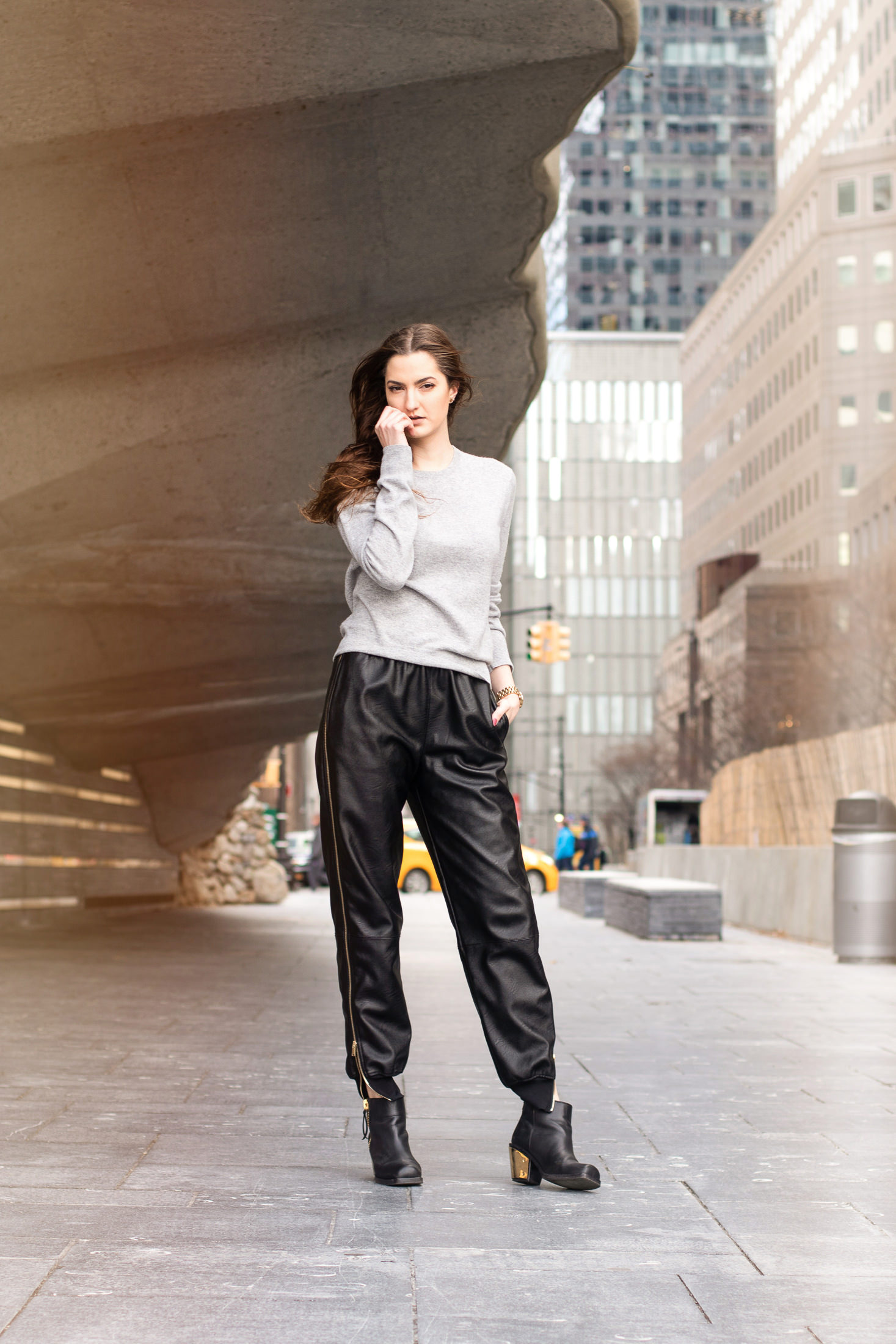
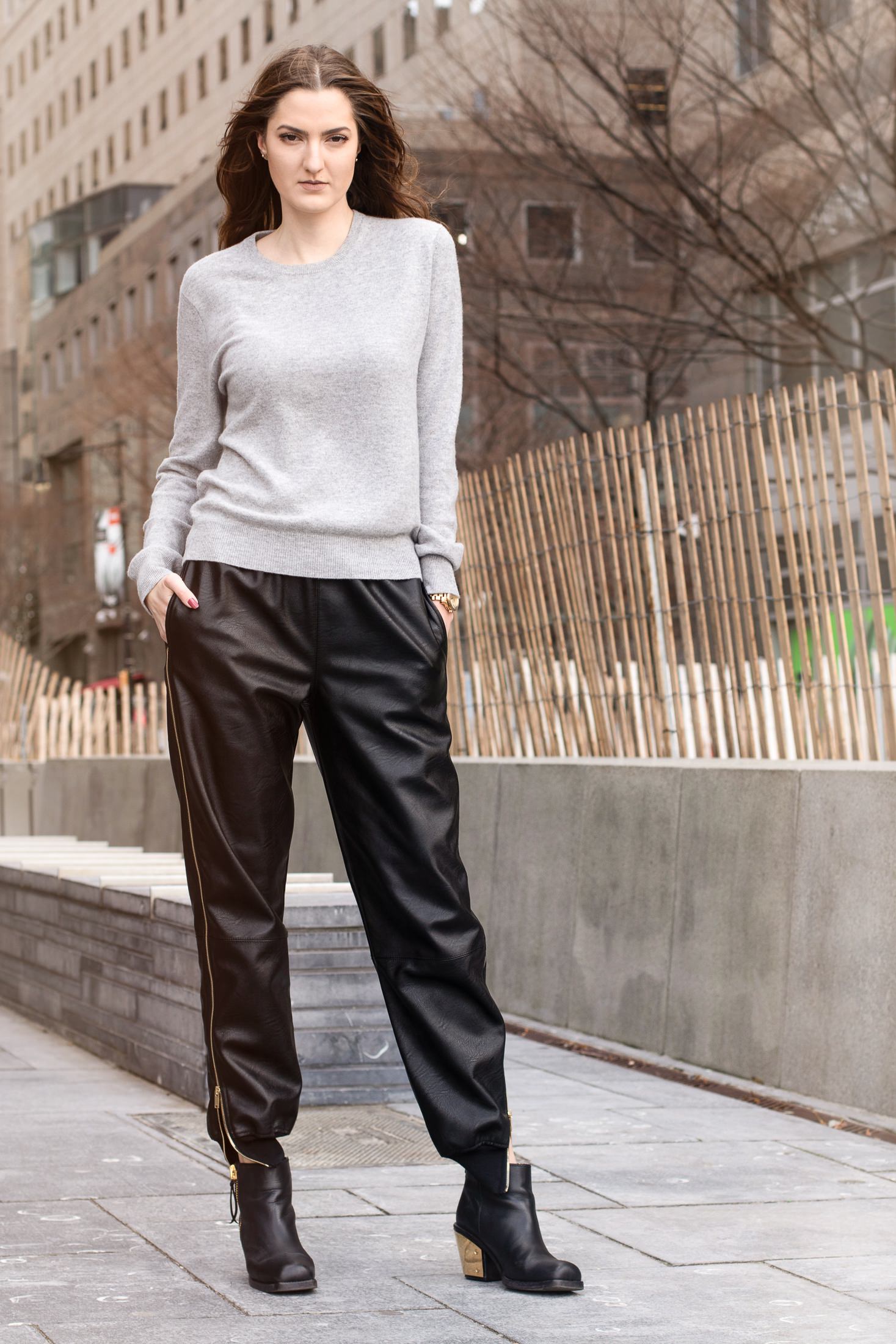
Lets talk about the sweater! This is my new favorite basic sweater and I want to live in it. It’s by a brand called NAADAM and I want to live in their NYC store among all the gorgrous cashmere. #lifeplan
The story of this brand is incredible and I’ll link a video you can watch to learn more (its actually pretty funny too) but here are some facts that I find super important: NAADAM sources materials straight from nomadic herders in Mongolia, paying them 50% more than traditional traders. They don’t use harsh chemicals and a hand-combing technique to provide cruelty-free cashmere. Sweaters are created with super long fibers, which means it’ll probably last you longer, which means you probably won’t need to shop as often, which is basically the main idea of sustainable fashion. On top of that, the sweater feels SUPER SOFT. And on top of the top of that, it cost me $75. Which is much less than what you would normally pay for unethically produced cashmere products. Staying on topic of sustainable luxury, I would consider NAADAM to be a high-end brand, despite not being a household name quite yet. The quality and fit of the sweater is honestly top-notch, you can just tell it was created with genuine care.
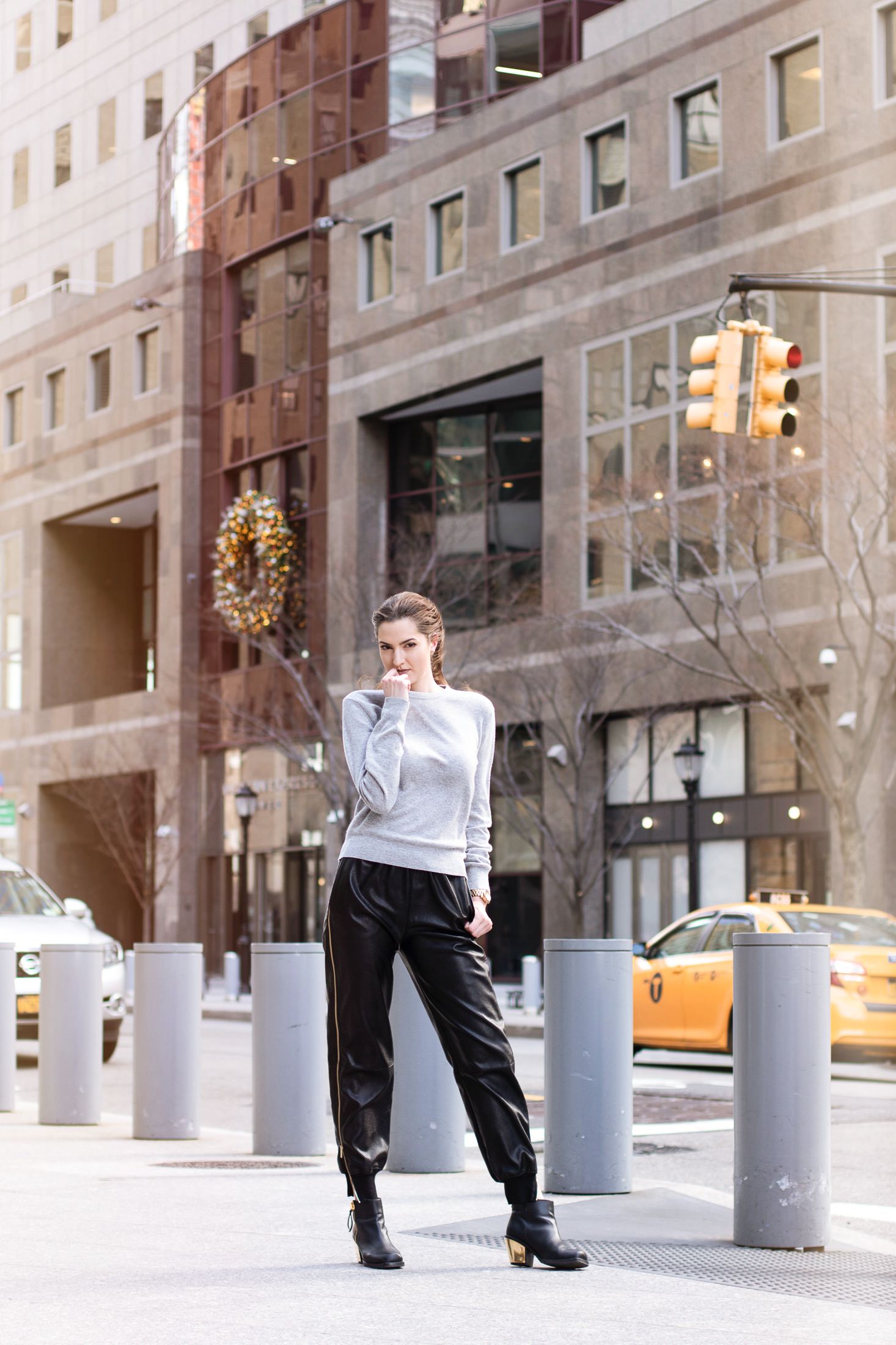


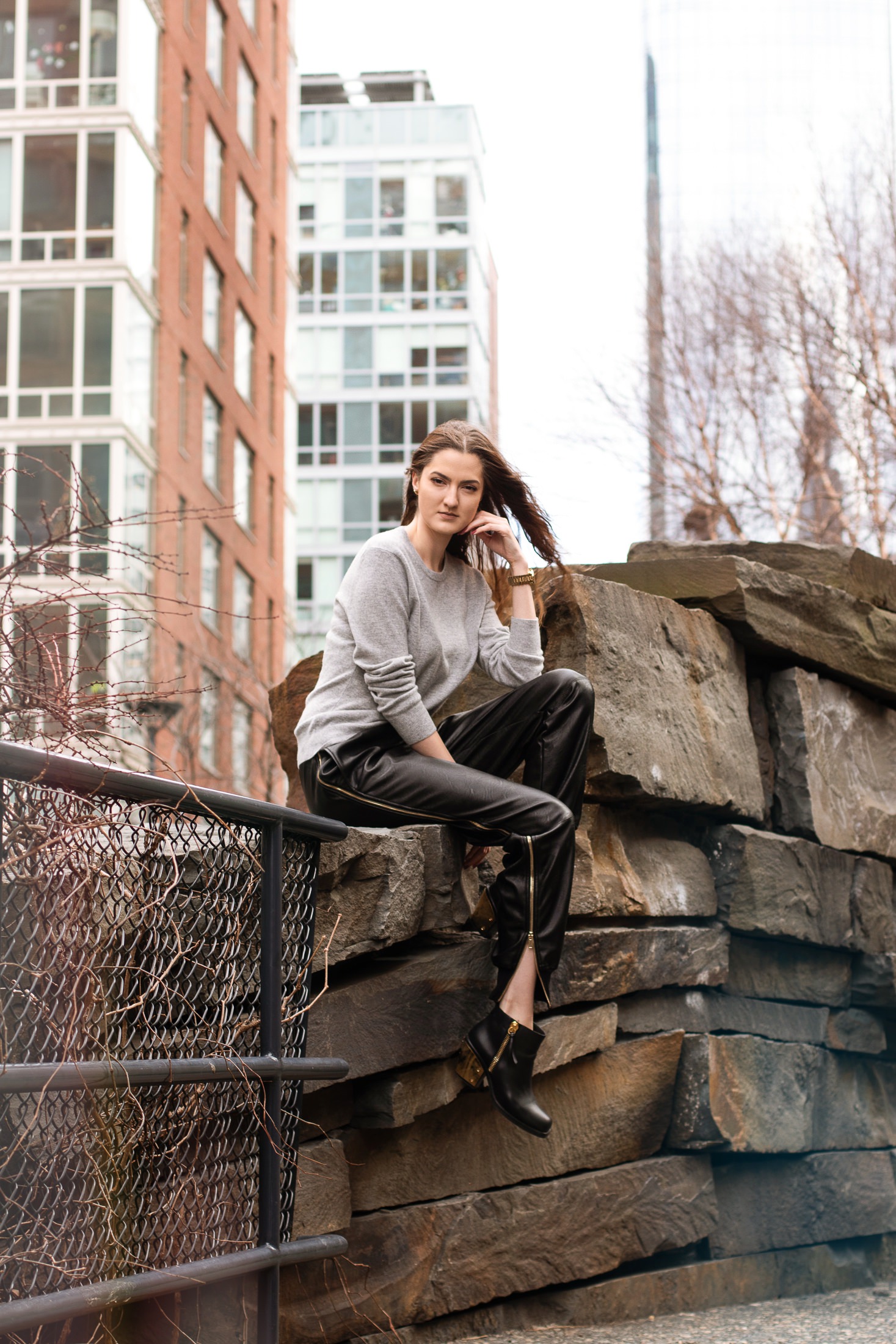
Let’s start a conversation. Tell me a little about yourself and what you thought about the post!
I approach this blog as a diary – taking you on my honest sustainable fashion & lifestyle journey, with sustainability aspects I slowly adopt, struggle with and feel passionate about. I’m building INNABOSE.COM to be an informative, visual & creative resource inspiring even the smallest changes in the world.
GENERAL BLOGGING TOPICS YOU’LL FIND HERE INCLUDE
#sustainablefashion
I’m also a Ukrainian New Yorker – having strong pride and patriotism for both: my homeland 

February 24, 2022 – my digital space shifted to include information about russia’s war on Ukraine, the devastation and destruction my home country is dealing with and the bravery, strength and inspiring spirit they are facing it with. A large portion of my posts today highlight Ukrainian brands, fashion, culture & the strong, incredible Ukrainians making gorgeous clothes you can buy & support local businesses, economy & people fighting for freedom every day. We are also a community who donates to Ukrainian organizations found in any of my recent posts!
#standwithukraine
Inna Bose
4 Responses
The pants are cool, but the quality of the sweater and the material cannot be considered.
I read the article about Naadam – 9 million goats died because of lack of grazing food in one year! Because of demand for cashmere, the number of goats dramatically increased in Mongolian desert, and there was not enough food for the goats, and there was a severe. How is that ethical?
“From 1993 to 2016, Mongolia’s livestock numbers, which includes cashmere goats, grew from 23 million to 71.5 million, leading to the degradation of the native grasslands on which the animals feed and trapping the herders in what many fear is a vicious cycle. Bigger herds lead to undernourished goats, which yield coarser, less desirable hairs, which bring lower prices, which force producers to breed even bigger herds to make up for it, which increases the pressure on the grasslands.
This is from:
https://www.entrepreneur.com/article/298146
Even more threatening is a mysterious, periodic weather phenomenon known as a dzud, which causes severe summer droughts followed by even harsher winters. When one struck in 2010, nine million animals died, and a dzud last year took out a million more, wreaking havoc on a population that already lives on the edge. “
Hi Carrie! Thanks for sharing, I always appreciate any kind of feedback and any info brought to my attention 🙂
From my understanding: demand for quite literally ALL resources right now is too high, which leads to the changes in livestock numbers, alterations to the terrain, climate changes, quality of life changes, etc.. But then you have giant fashion brands mass-producing cheaper short-lasting items and smaller fashion brands like Naadam that actually try to make a difference in the process. The paragraph right below the one you quoted about dzud states:
“We saw how hard it was for this family and how much they cared about their animals,” says Scanlan. “And so by the time we left, we felt like we needed to find a way to give back for this experience — …”
So Scanlan and Rijsemus decided to repay the favor. First, they went around and raised money from family and friends to fund veterinary programs for the herders. Then, to see if they could support the cause but also build a business for themselves, they launched a Kickstarter in 2013 with an initial goal of $20,000, selling Mongolian-made cashmere sweaters with a piece of the proceeds going to efforts to aid the herders…”
As far as my research around Naadam goes, they don’t overproduce, treat and pay all the people in their production process fairly, actually invest in programs that care for the animals, invest in projects like the Naadam park: “a 200,000 dollar project that saw over 2000 trees planted, and will see another 10,000 trees planted in the next two years. Our park is a real park with gazebos and pathways, and when finished it will house the only grass soccer field within 500 miles and draw thousands of local visitors, dramatically increasing the local economy and sense of community.”
At the end of the day, a huge part of fashion sustainability to me means investing in items that’ll last you for a very long time and you won’t need to repurchase them again soon, therefore not fueling this high demand for resources, whether its cashmere, cotton, or anything else. To me, Naadam has been great at that: I’ve worn their sweaters many many times already and they still look like they’re in brand new shape. I take very seriously which brands I align myself with or talk about, so I do stand by my statements, but I also appreciate your comment and please, let me know if you disagree with anything I said above. I would love to have a discussion 🙂
looooove the pants